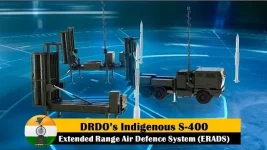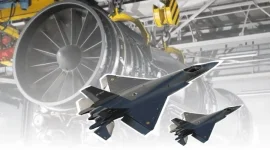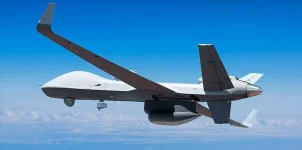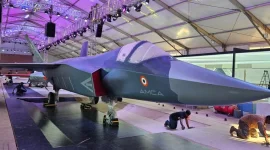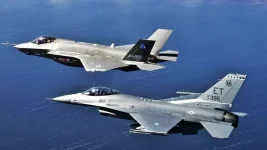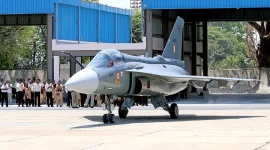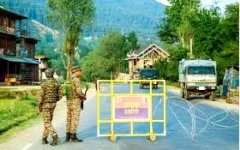- Views: 105
- Replies: 6
India's indigenous military aviation sector is poised for a significant advancement, with the first prototype of the Tejas Mk2 fighter jet scheduled for its official rollout by the end of 2025.
State-owned manufacturer Hindustan Aeronautics Limited (HAL) is on a firm timeline to commence full-scale production of the advanced aircraft by early 2029, aiming to deliver an initial order of 120 jets to the Indian Air Force (IAF) by 2034.
This ambitious schedule highlights the nation's push towards self-reliance in critical defence technology under the 'Aatmanirbhar Bharat' initiative.
The Tejas Mk2, officially classified as a Medium Weight Fighter (MWF), represents a substantial leap over its predecessor, the Tejas Mk1. Designed as a 4.5-generation multirole combat aircraft, it features significant upgrades for enhanced performance and lethality.
The aircraft is powered by a single General Electric F414-INS6 engine, capable of producing 98 kilonewtons of thrust, enabling it to carry a greater payload and operate more effectively.
Key enhancements include a larger airframe, forward canards for improved agility, and a state-of-the-art avionics suite, featuring an indigenous Uttam Active Electronically Scanned Array (AESA) radar and an Infrared Search and Track (IRST) system for superior target detection.
The strategic importance of the Tejas Mk2 lies in its role as a modern replacement for the IAF's ageing fleets of Jaguar, Mirage 2000, and MiG-29 aircraft, many of which were inducted into service in the 1980s.
The initial order of 110 to 120 aircraft is expected to form six combat squadrons, significantly bolstering the IAF's operational strength. The Ministry of Defence may consider future orders for up to 210 additional units, which could bring the total fleet size to over 300 jets, modernising the air force to meet regional security challenges.
Development is progressing at a steady pace at HAL's facility in Bengaluru, where the first prototype is currently in an advanced stage of assembly. Key structural components, including the fuselage and wings, have already been joined.
The aircraft is slated for its first public appearance between November and December 2025.
Following the rollout, it will undergo several months of ground and taxi trials before its maiden flight, which is anticipated by mid-2026. To fast-track the complex testing phase, a total of four prototypes will be manufactured by 2028.
To meet the demanding delivery targets, HAL has devised a phased manufacturing strategy.
Production is set to begin in 2029 with an initial rate of 16 to 18 aircraft per year, which will be scaled up to a peak capacity of 24 jets annually. This will be achieved by systematically transitioning existing Tejas Mk1A production lines in Nashik and Bengaluru to manufacture the Mk2.
The project emphasizes domestic industry, with indigenous content set to exceed 82% from the start, and is supported by a robust supply chain that includes private sector firms like Larsen & Toubro and Tata Advanced Systems.
The Tejas Mk2 programme serves as a crucial bridge between the existing Tejas Mk1A and India’s next ambitious project, the fifth-generation Advanced Medium Combat Aircraft (AMCA).
With its advanced features, including a design that reduces its radar cross-section for better stealth, the Mk2 is a cornerstone of India's air power strategy for the coming decades.
The programme's progress has also attracted international attention, with several countries expressing interest in the aircraft, positioning India as a potential future exporter of high-technology defence equipment.

